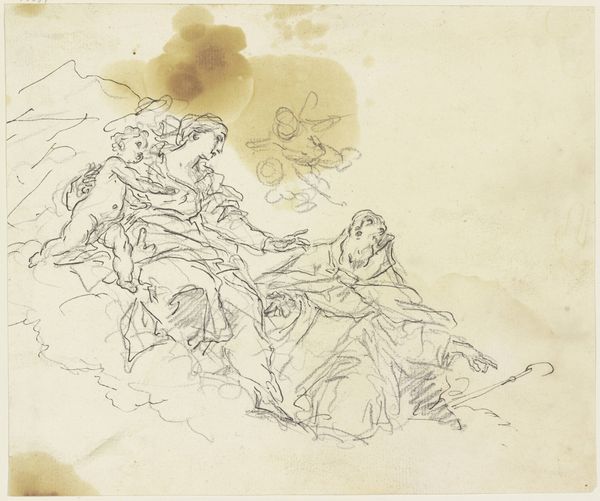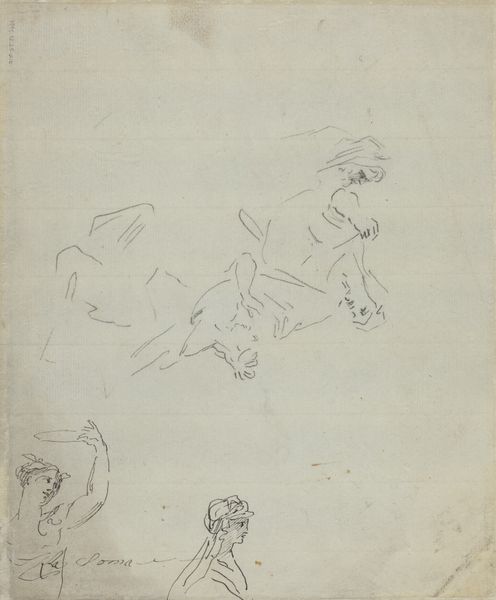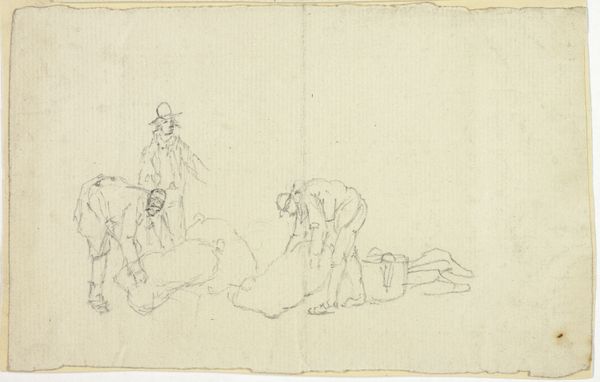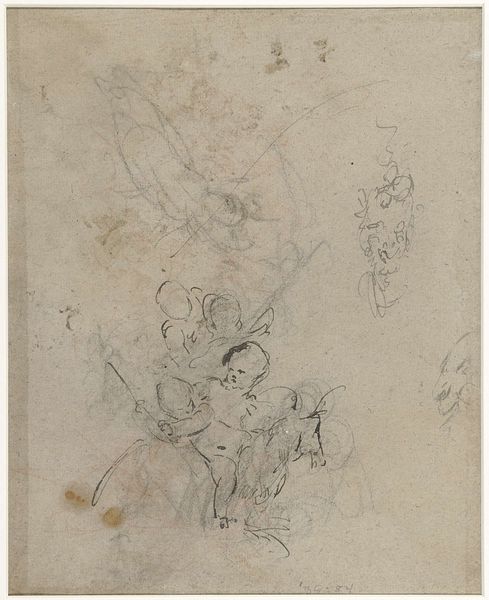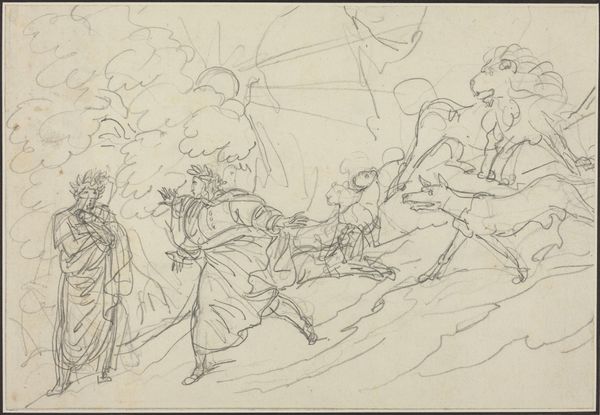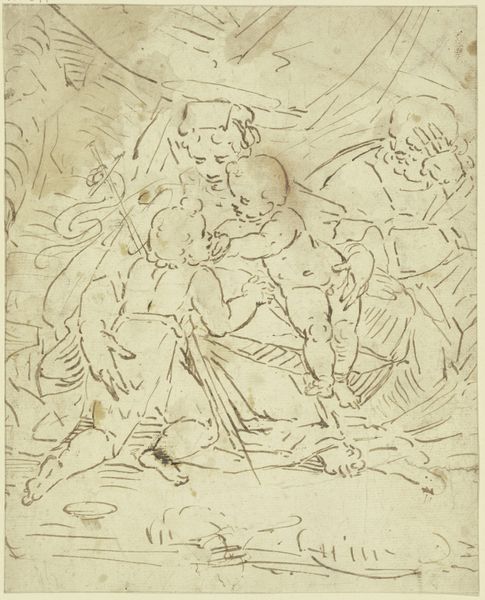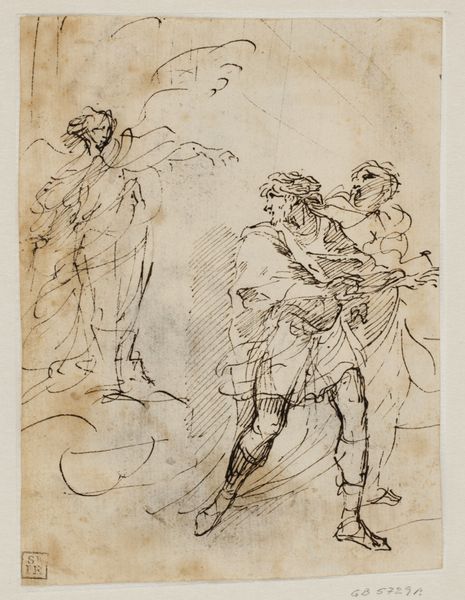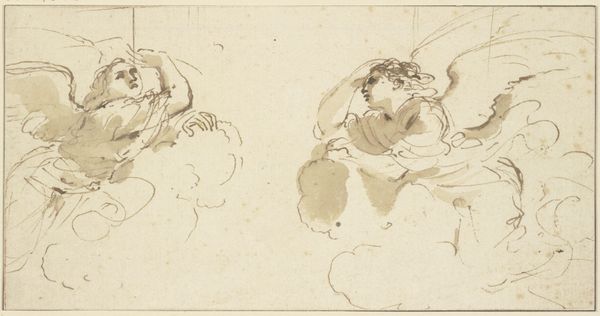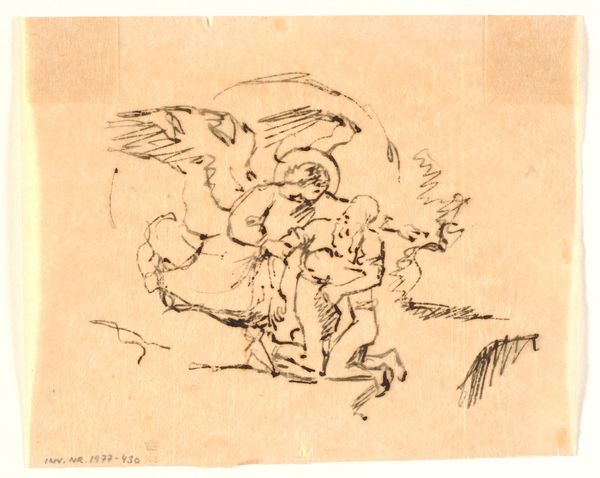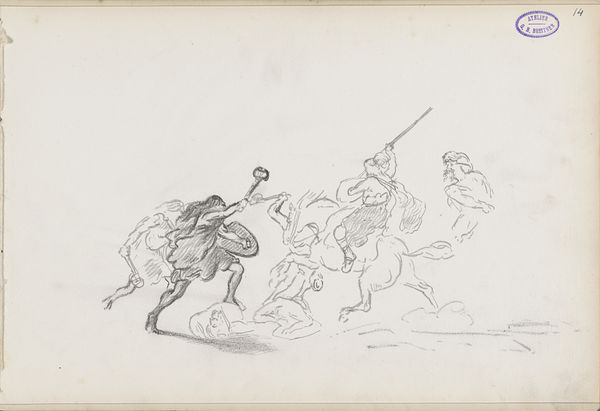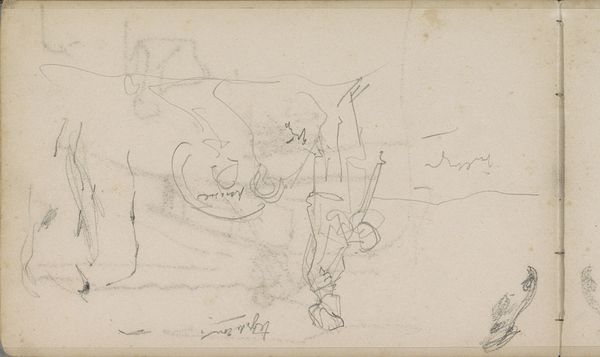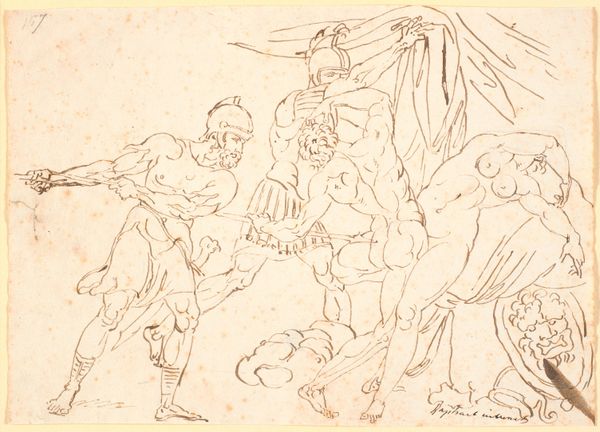
drawing, ink, indian-ink, chalk
#
drawing
#
allegory
#
baroque
#
ink painting
#
ink
#
indian-ink
#
chalk
#
history-painting
Copyright: Public Domain
Editor: Here we have Gaspare Diziani's drawing, "Allegorical Figure on a Carriage (Triumph of Flora)" rendered in chalk and ink. There’s such a dynamism in this sketch, even with the limited palette. How might we understand the purpose and significance of this work within its artistic context? Curator: Well, focusing on materiality and production, consider the relative accessibility of chalk and ink compared to, say, oils. This points to a drawing made in preparation, perhaps for a larger, more 'precious' work. The artist, through this accessible medium, is exploring the socio-economic structure surrounding artistic creation, making visible the labour usually concealed in a finished history painting. Editor: So, the drawing is less about the finished image, and more about the *process* leading up to it? I'm not sure I see that... isn't the focus still the allegory itself, Flora in triumph? Curator: Think about it this way: What does the Baroque style emphasize? Ornamentation, drama. What are chalk and ink good at? Quick, expressive lines. Diziani leverages these materials to explore not only the myth of Flora but the very means by which such narratives are produced and disseminated. It highlights the performative act of artistic creation itself. Where was such drawing commonly practiced? Editor: Workshops and studios... a very collaborative, and therefore material, process. I see how your interpretation considers that it is rooted in a specific context of artisanal production. Curator: Exactly! By highlighting these underpinnings of image making, we also understand that this isn't just a celebration of Flora, but, tacitly, the artisan hands that reproduce such allegories. A conscious decision to leave the underdrawings visible reveals that artistic labor and its intrinsic value. Editor: That’s fascinating. I had not thought of it that way. So, by paying close attention to what something is *made* of, and *how* it’s made, it's almost as if we are reading the socio-economic history of its creation! Curator: Precisely. Analyzing an artwork's material composition illuminates a wider story concerning labor, consumption, and how those systems shape cultural products.
Comments
No comments
Be the first to comment and join the conversation on the ultimate creative platform.
